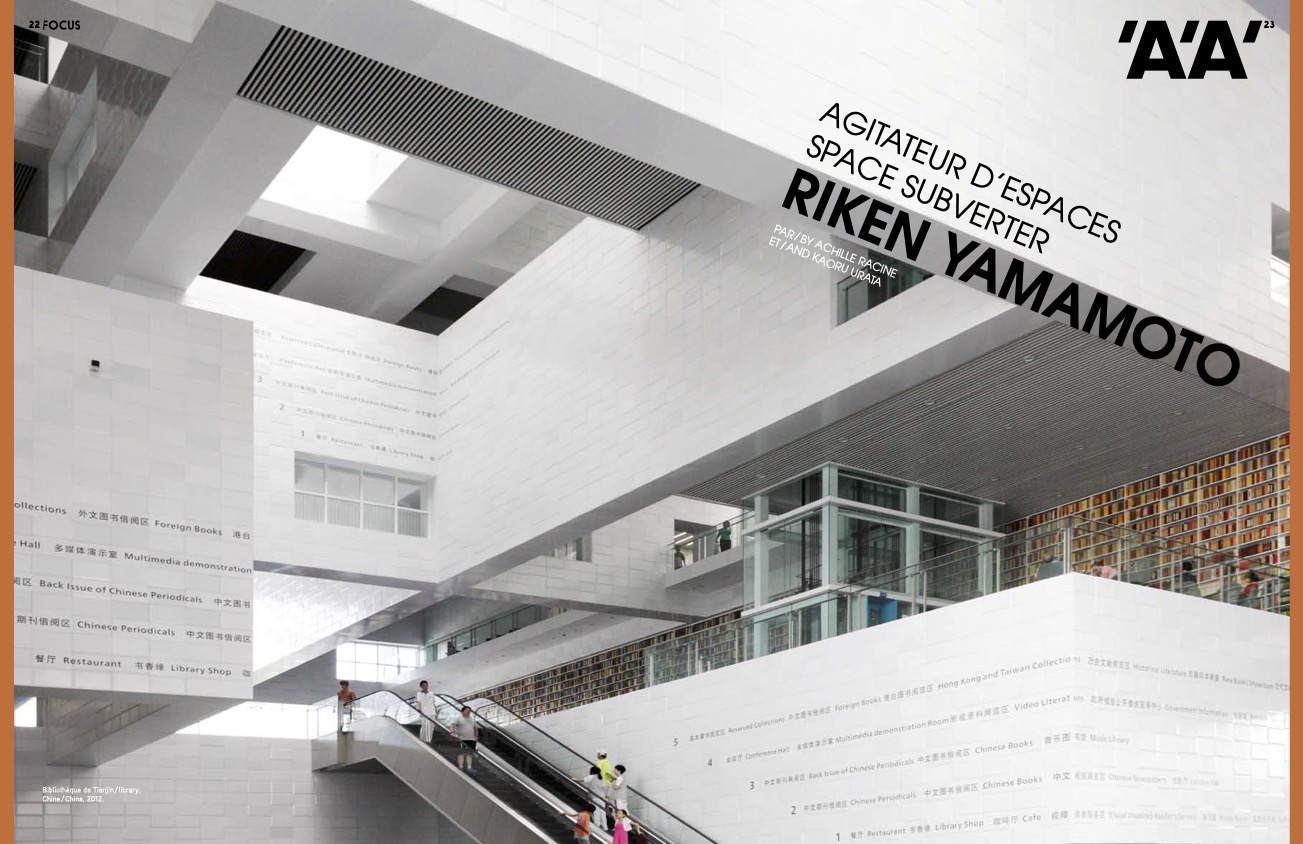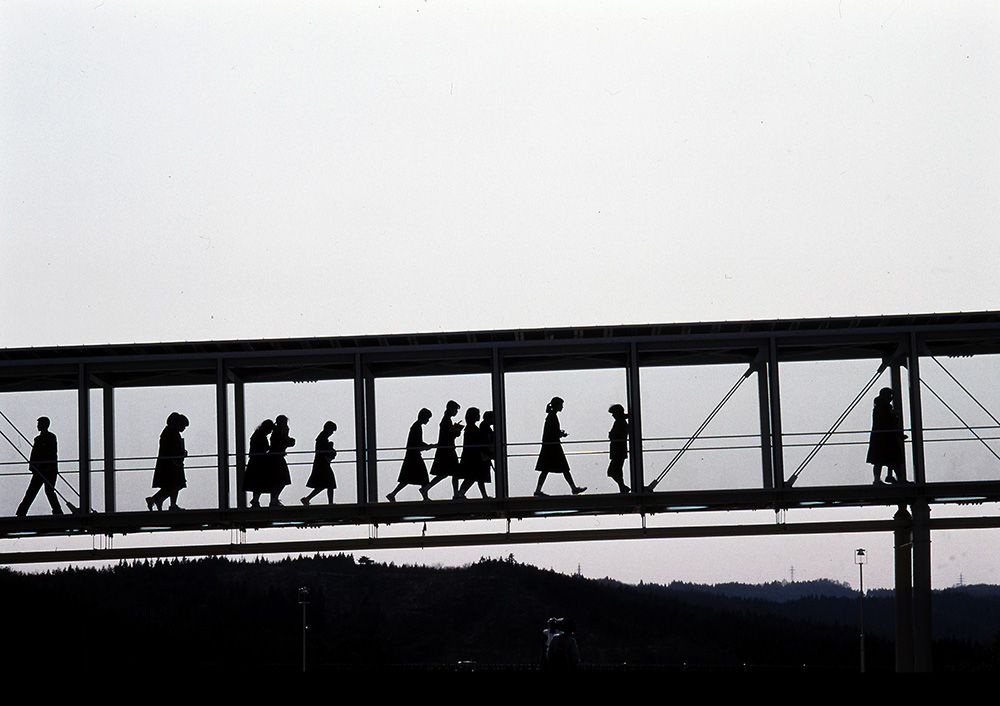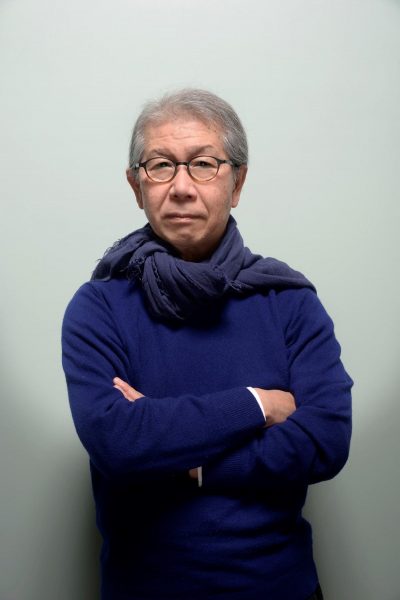Riken Yamamoto, Pritzker Prize 2024
Announced on Tuesday 5 March, the Pritzker Prize 2024 has been awarded to Japanese architect Riken Yamamoto, born in China. In his practice, Yamamoto sees the boundaries between the public and private sphere as "societal opportunities" and is convinced that "all spaces may enrich and serve the consideration of an entire community, and not just those who occupy them". (Re)discover his portrait by Achille Racine and some of his work, published in November 2013 in AA's 398th issue.
by Achille Racine
Player in the protests of 1968, Riken Yamamoto fosters a rejection of Modernist and productivist dogmas with very Japanese restraint. Real pieces of the city, his creations are intended to be flexible and unpredictable, with a spatial and collective wealth beyond all conventional readability.
Riken Yamamoto is modestly anti-establishment. “I am not very good at design”, he admits by way of a presentation of his work. With very Japanese graciousness, this is a way of immediately criticizing the importance given to form, and emphasizing that there are other areas for architecture. Born in 1945, very early on he declared his divergences, first with the productivist model – he repeated a year for having taken part in the student protests of 1968 –, then with the Modernist dogma, which he considered debasing and authoritarian. He founded his office in 1973 and his first houses, followed by a clinic and a school, gave him the reputation of an architect attentive to the city and uses.
The bursting of the housing bubble, in the middle of the 1990s, was to propel the Riken Yamamoto studio forward, since it embodied the public sector after the collapse of the private one. First in a series of huge projects, the Saitama and Hakodate universities, as well as the Hiroshima fire station represent an important turning point. Restricted as a result of the crisis and the limited size of his studio, the architect became plainer, more rudimentary in his representation, and more systematic in particular. For all that, there is nothing debasing in the repetitiveness and simplicity of his geometry. On the contrary, it created a working method to serve his ambitions.
The changing city
Since his travels with his professor Hiroshi Hara, in the 1960s, to study traditional villages, the city has fascinated him in its scale and the interactions it permits. Riken Yamamoto’s projects are real pieces of the city, recreating its density, porosity and flexibility, but in an altered version. The centre of Saitama University, a large horizontally built layer, 250 by 80 meters, with courtyard and passageway openings, recall Arab villages. The contrast between the intricacy of the recessed spaces, where students find privacy, and the landscape of planted roofs, opening generously onto the surrounding paddy-fields, is striking. Similarly, later in Beijing, Tokyo and Seoul, the architect solved contradictions by superimposing a human-sized, dense and varied city, separate buildings, and occasionally a synthetic natural environment between the two. Riken Yamamoto is a true flow engineer. It is the route through the staggered courtyards, passageways, and chicanes that creates the interiority and privacy and this with much greater efficiently than a fence. The architect is not looking for broad guidelines, or frontality. On the contrary, he wishes to recreate the mystery, and unpredictable nature of the city, in a systematic approach that is intentionally in contrast with all readability.
Urban interaction
Riken Yamamoto tries to recreate what he values in the city inside his buildings, in a technologically controlled environment. Thus, the Hiroshima fire station looks like a real machine dedicated to public space: the firemen’s training spaces, usually isolated, occupy the very centre of the building. Each part of the building revolves around this great empty space, a pretext for a whole series of interactions. A large observation gallery enables school children to come and watch the firemen training through glass walls. Elsewhere there are tiny windows, here an exterior gangway, there a balcony, all creating relationships with the different spaces, while maintaining their independence.
By building urban condensers, Riken Yamamoto is looking to abandon control, and leave everything to the unpredictability of the interactions and changes that he has seen in the city. And, as with his urban projects, the architect manages to create privacy using simple methods. In Saitama University, inside the giant galleries of the highest buildings, delimiting the campus, the stairwells create interruptions at regular intervals, each recreating small meeting places of surprising spatial generosity.
Beginning with the small
Sharing an interest in large scales with his metabolist elders or Team 10, for all that the architect does not resign himself to a form of brutality or rupture with his context. Designed by the aggregation of elementary cells, as in Saitama, or by the filling of a structure, as in Hiroshima, his architecture remains on a surprisingly human scale. By beginning small and progressing to large, it avoids uniformity, monotony, rigidity and the suppressing of individuality.
In Riken Yamamoto’s buildings, beauty is born of the straightforwardness of the relationship between large and small, between the structure, most often left in its rough state, and its occupants, but also the impossibility of grasping everything in one glance. Monumentality emerges – a concern which seems to have disappeared in Japan, converted to “small is beautiful” – and results in something surprisingly soothing. It is as though the architect’s buildings are the expression of the community in its simplest version; more liberating than authoritarian, more Piranesian than Modernist.
Find out more about the architect’s work, published in November 2013 in issue 398 of L’Architecture d’Aujourd’hui :




